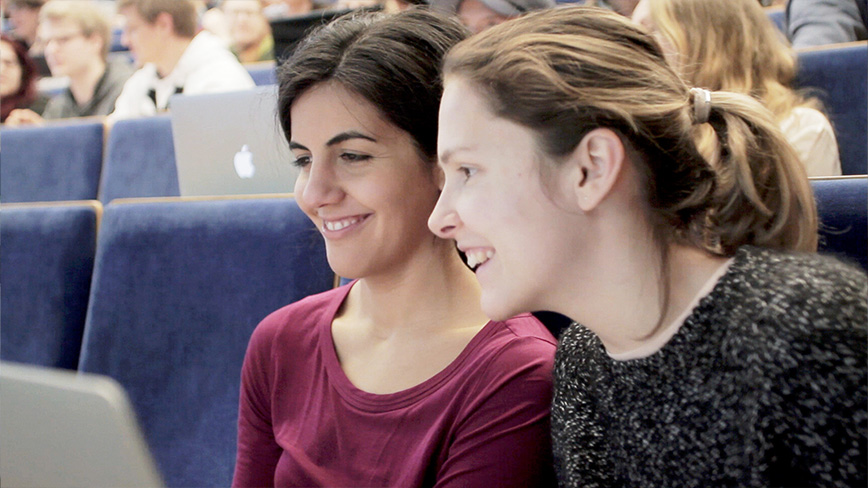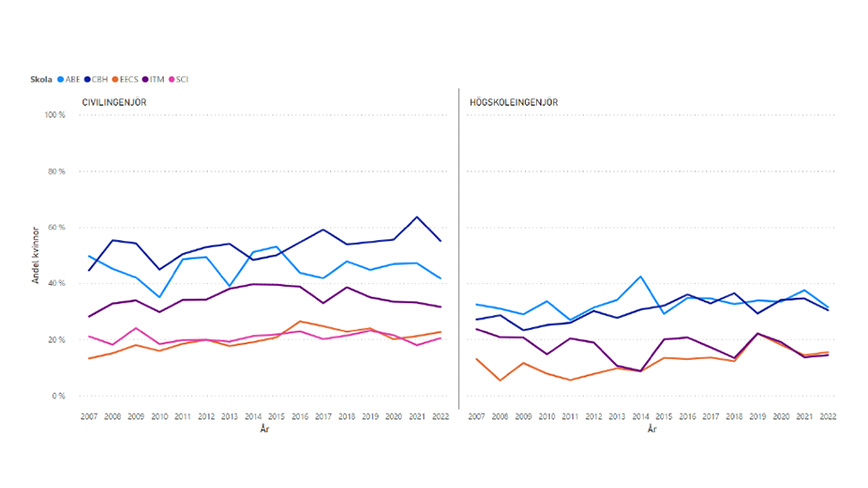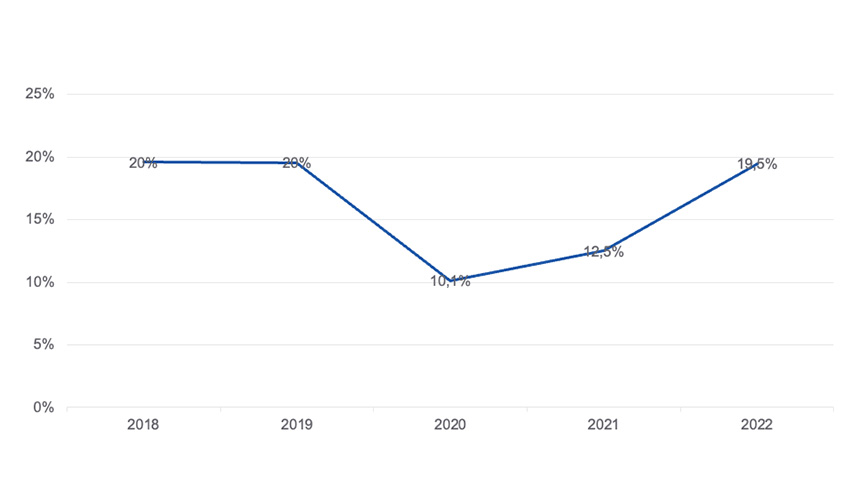Women still a minority in EECS' programmes

For this year's International Women's Day, the UN celebrate the women who are championing the advancement of technology and digital education. At EECS, only 24 percent of all students are women. But the long-term work continues.
Encouraging women and other marginalised groups in society to work with technology is a boost to the promotion of creativity, innovation and gender equality. Lack of inclusion, by contrast, comes with massive costs. According to the UN Women’s Gender Snapshot 2022 report , women’s exclusion from the digital world has shaved $1 trillion off from the gross domestic product of low- and middle-income countries in the last decade.
Therefore, the UN is dedicating International Women's Day 2023 to the theme DigitALL: Innovation and technology for gender equality. During the year, they will investigate the effects of the digital gender gap on increasing economic and social inequalities.
In Sweden, two out of three university applicants are women. But only one in four engineering students are female. Technical courses in particular have a disproportionately high proportion of male students than female students. But even here it varies within specialisations and subject areas.
A survey by the Royal Academy of Engineering Sciences (IVA) together with Teknikföretagen and Sveriges Ingenjörer shows that among Swedish colleges and universities, engineering education is one of the few educations where women are still markedly underrepresented. Things are improving, but the changes are slow. The percentage of women on the courses is between 25–30 percent.
"Our overall challenge is the same as it has been for a long time. To recruit more female students and to make sure they stay," says Viktoria Fodor, Deputy Director of First and Second Cycle Education at EECS.
To succeed, girls need to be introduced to engineering topics at an early age. There is also a need to reach out to students who come from non-academic families. Once studying at KTH, mentoring programmes, sponsors and support from teachers can help keep up their motivation.
EECS below KTH average
The average for the percentage of female students at KTH as a whole is 31 percent. Since 2018, EECS has remained between 23–25 percent female students. Since 2007, the increase has been slow, but steady.

Varies between programs
Statistiscs over the last few years reveal a fluctuation between different programmes. One of the school's undergraduate programmess that is above the KTH average is the Master's programme in Media Technology program with 43.2 percent women in 2022.
Even at master's level, it is Media Management and Interactive Media Technology that dominate with 56 and 73 percent female students respectively.
The 5-year engineering programme in Electrical Engineering was quick to detect a downward trend and took to measures during the application period in spring 2022. Their efforts resulted in an increase from from 12.5 to 19.5 percent new female students for the autumn 2022 admission.
"This is largely thanks to dedicated students at the chapter that made this turnaround possible. I just try to encourage and support them," says programme director Joakim Jaldén.

"Unfortunately, the uneven gender distribution among our students is nothing new. But if we give up and don't take it seriously, KTH as an educational institution has failed in its mission to contribute to a more sustainable and equal society," concludes Ann Lantz, the EECS Acting Head of School .
Text: Charlotta Alnersson
